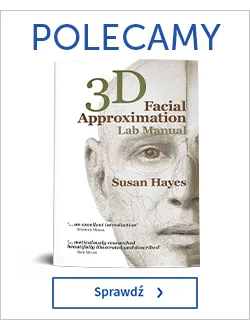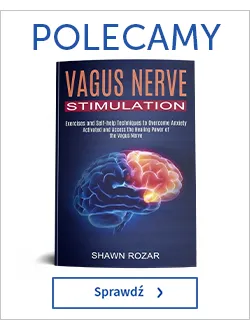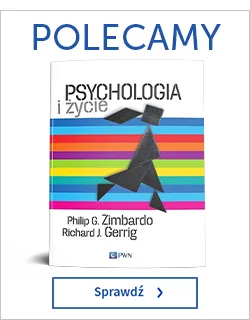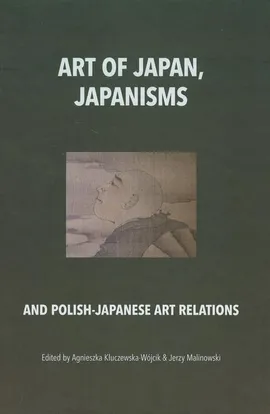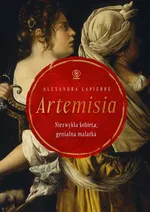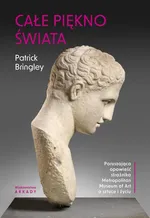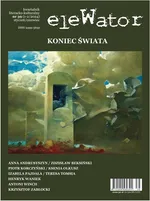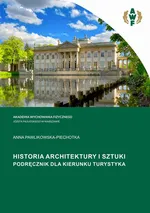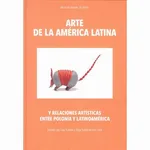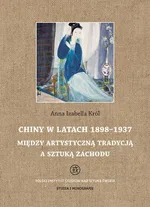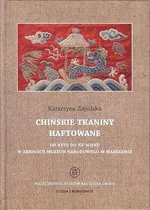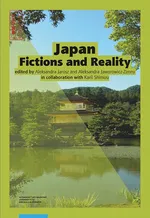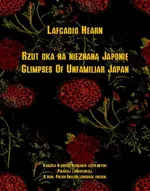- Kategorie:
- Redakcja: Agnieszka Kluczewska-Wójcik, Jerzy Malinowski
- Język wydania: ??angielski_pl_PL??
- ISBN: 978-83-62737-16-1
- ISBN druku: 978-83-62737-16-1
- Liczba stron: 364
-
Sposób dostarczenia produktu elektronicznegoProdukty elektroniczne takie jak Ebooki czy Audiobooki są udostępniane online po uprzednim opłaceniu (PayU, BLIK) na stronie Twoje konto > Biblioteka.Pliki można pobrać zazwyczaj w ciągu kilku-kilkunastu minut po uzyskaniu poprawnej autoryzacji płatności, choć w przypadku niektórych publikacji elektronicznych czas oczekiwania może być nieco dłuższy.Sprzedaż terytorialna towarów elektronicznych jest regulowana wyłącznie ograniczeniami terytorialnymi licencji konkretnych produktów.
-
Ważne informacje techniczne
-
Minimalne wymagania sprzętowe:
- procesor: architektura x86 1GHz lub odpowiedniki w pozostałych architekturach
- Pamięć operacyjna: 512MB
- Monitor i karta graficzna: zgodny ze standardem XGA, minimalna rozdzielczość 1024x768 16bit
- Dysk twardy: dowolny obsługujący system operacyjny z minimalnie 100MB wolnego miejsca
- Mysz lub inny manipulator + klawiatura
- Karta sieciowa/modem: umożliwiająca dostęp do sieci Internet z prędkością 512kb/s
-
Minimalne wymagania oprogramowania:
- System Operacyjny: System MS Windows 95 i wyżej, Linux z X.ORG, MacOS 9 lub wyżej, najnowsze systemy mobilne: Android, iPhone, SymbianOS, Windows Mobile
- Przeglądarka internetowa: Internet Explorer 7 lub wyżej, Opera 9 i wyżej, FireFox 2 i wyżej, Chrome 1.0 i wyżej, Safari 5
- Przeglądarka z obsługą ciasteczek i włączoną obsługą JavaScript
- Zalecany plugin Flash Player w wersji 10.0 lub wyżej.
-
Informacja o formatach plików:
- PDF - format polecany do czytania na laptopach oraz komputerach stacjonarnych.
- EPUB - format pliku, który umożliwia czytanie książek elektronicznych na urządzeniach z mniejszymi ekranami (np. e-czytnik lub smartfon), dając możliwość dopasowania tekstu do wielkości urządzenia i preferencji użytkownika.
- MOBI - format zapisu firmy Mobipocket, który można pobrać na dowolne urządzenie elektroniczne (np.e-czytnik Kindle) z zainstalowanym programem (np. MobiPocket Reader) pozwalającym czytać pliki MOBI.
- Audiobooki w formacie MP3 - format pliku, przeznaczony do odsłuchu nagrań audio.
-
Rodzaje zabezpieczeń plików:
- Watermark - (znak wodny) to zaszyfrowana informacja o użytkowniku, który zakupił produkt. Dzięki temu łatwo jest zidentyfikować użytkownika, który rozpowszechnił produkt w sposób niezgodny z prawem.
- Brak zabezpieczenia - część oferowanych w naszym sklepie plików nie posiada zabezpieczeń. Zazwyczaj tego typu pliki można pobierać ograniczoną ilość razy, określaną przez dostawcę publikacji elektronicznych. W przypadku zbyt dużej ilości pobrań plików na stronie WWW pojawia się stosowny komunikat.
Art of Japan Japanisms
(eBook)and Polish-Japanese art. Relations
-
Druk: Warszawa, 2012
-
Autor: Agnieszka Kluczewska-Wójcik, Jerzy Malinowski
-
Redakcja naukowa: Agnieszka Kluczewska-Wójcik, Jerzy Malinowski
-
Wydawca: Polski Instytut Studiów nad Sztuką Świata
-
Formaty:
PDF (Watermark)WatermarkZnak wodny czyli Watermark to zaszyfrowana informacja o użytkowniku, który zakupił produkt. Dzięki temu łatwo jest zidentyfikować użytkownika, który rozpowszechnił produkt w sposób niezgodny z prawem. Ten rodzaj zabezpieczenia jest zdecydowanie najbardziej przyjazny dla użytkownika, ponieważ aby otworzyć książkę zabezpieczoną Watermarkiem nie jest potrzebne konto Adobe ID oraz autoryzacja urządzenia.
Art of Japan Japanisms
Art of Japan, Japanism and Polish-Japanese Art Relations consists of 48 studies prepared in conjunction with the international conference organized by the Polish Society of Oriental Art (now Polish Institute of World Art Studies) at the Museum of Japanese Art and Technology “Manggha” in Krakow in 2010.
These include analyses of the aesthetic concepts and interpretations of Japanese art history from the Middle Ages to the present. The art of Japan was known in Europe since the 16th century, however, the result of opening of the Empire to the world in 1854 was that the works of art imported to Europe, especially graphics and porcelain, had a decisive influence on the evolution of European art and artistic taste.
Thanks to distinct stylistic features, rules of composition in landscape scenes, genre scenes and portraits – in ukiyo-e graphic, as well as other techniques and principles of decoration – in ceramics and applied arts, European artists gained a new source of artistic and technological inspirations to the major trends – Impressionism, Post-Impressionism, Art Nouveau, Expressionism and Functionalism, forming the basis of art of the 20th century. At the same time, the Japanese artists adapted the “new art” from Europe, changing the canons of their own work in the search for new means of expression – in painting, posters, architecture or film.
Spis treści:
JERZY MALINOWSKI, AGNIESZKA KLUCZEWSKA-WÓJCIK, Introduction; - Japanese and Western approach: KRYSTYNA WILKOSZEWSKA, Art and the arts; BEATA KUBIAK HO-CHI, Taste, sense of beauty, and the cognitive role of Japanese aesthetics; YUMIKO MATSUZAKI, Johakyu 序破急; HIDEMICHI TANAKA, The Classicism of the Nara art (8th century); STEPHAN VON DER SCHULENBURG, Salt dealer Bunshō’s incredible career. Introducing a rare collection of Japanese illustrated manuscripts (Nara ehon) in Frankfurt’s Museum of Applied Arts; TOMOKI OTA, The “export” of artistic crafts through foreigners visiting Kyoto in the modern period; AGNIESZKA KOZYRA, Zen influence on Japanese dry landscape gardens; MAŁGORZATA WOŁODŹKO, The Japanese Garden in Wroclaw – trends in transformations from 1913 to 2005; CHRISTINE M. E. GUTH, Yokoo Tadanori and the rediscovery of Hokusai’s Great Waves; - Past and present: continuity of tradition: JULIA HUTT, How Japanese was the Inrō?; ESTERA ŻEROMSKA, Dashi-ningyō or the dolls on the top of floats in the Kawagoe-matsuri; MONIKA LECIŃSKA-RUCHNIEWICZ, Evolution of Takarazuka stage make-up. From reality to extremity; SVITLANA RYBALKO, Japanese traditional raiment as a modus of Japanese culture; JOHN J. TOOMEY, Searching for Shuko’s “chilled” and “withered” in a global age: the inner dynamics of a modern day tea ceremony; KLAUDIA MORAWIEC, Bizen – traditional Japanese ceramics; MAGDALENA KOŁODZIEJ, Saikokai and the paradigm shift in the appreciation of ceramics in Japan; JOANNA KORYCIARZ-KITAMIKADO, Kintsugi. The Japanese way of repairing china with lacquer and gold; KATARZYNA ZAPOLSKA, The screen with the image of a tiger and a dragon. The technique of workmanship and the conservation; WERONIKA LISZEWSKA, JACEK TOMASZEWSKI, Traditional Japanese methods and European conservation principles in the restoration of the kakemono scrolls from the collection of Asia and Pacific Museum in Warsaw; - Japanese art in the West: GENEVIEVE LACAMBRE, China’s role in the diffusion of Japanese lacquerware; ANNA EKIELSKA-MARDAL, Namban table. A Japanese star of Wilanow historical collection; MONIKA BINCSIK, Japanese art as ethnographic or decorative art: the 1868–1869 Austro-Hungarian East Asia Expedition and collecting Japanese art in Vienna and Budapest; AGNIESZKA KLUCZEWSKA-WÓJCIK, Collecting and promotion of the Japanese art in Poland at the turn of the 19th and 20th century; TOMO IMAI, The collection of Charles Cartier-Bresson (1852–1921) and the Japanese curio market in Paris at the end of the 19th century and at the beginning of the 20th century; ANNA KATARZYNA MALESZKO, A Collection of Japanese cloisonne enamels in the National Museum, Warsaw; KATARZYNA PACZUSKA, Japanese collection of The District Museum in Toruń; MAŁGORZATA MARTINI, Ukiyo-e woodblock prints inspired by the Japanese adaptations of Chinese novels based on the Feliks Jasieński collection; GALINA SHISHKINA, The collection of Shudo Sadamu in the State Museum of Oriental Art in Moscow;- Western visions of Japan: TOSHIO WATANABE, What is Japonisme? Terminology and interpretation; JOHN SZOSTAK, Unexpected reversals: Japanism, Ukiyo-e prints, and their influence on Meiji and Taishō-era Kyoto Nihonga; JERZY MALINOWSKI, Polish and Japanese painting. Relations and parallels (1853–1939); ŁUKASZ KOSSOWSKI, The unique quality of Polish Japanisme; PIOTR SPŁAWSKI, Japonisme at Krakow Academy of Fine Arts (1895–1939) in the context of other examples of Japonisme in art education; EWA MACHOTKA, Kimono and sword: performing Japanese in Galician Krakow; MARKETA HANOVA, Japonisme and Japonaiserie in the Czech Lands (1880s–1920s); JAKUB KARPOLUK, The Meiji no Nihon film collection. Visions of the 19th century Japan captured by European and Japanese early filmmakers; ŁUKASZ MIKOŁAJ SADOWSKI, The Japanese “overseas” architecture in North-East China 1905–1945; GISELA JAHN, Let’s go West: Japanese design invades occidental tableware in the 1930s; - Japan and Poland: modern and contemporary art: TOSHINO IGUCHI,The pioneers of media art in postwar Japan: the avant-garde group Jikken Kobo (Experimental Workshop); NAGISA RZĄDEK, Visual communication in Japanese theater poster: contextual materials for a poster by Tanaka Ikkō; KATARZYNA KULPIŃSKA, Polish and Japanese masters of posters (after 1945) – schools, inspirations, influences; JAQUELINE BERNDT, Images to be “read”: Murakami Takashi’s mangaesque nihonga-like paintings; MAGDALENA FURMANIK-KOWALSKA, Cultural performance in photography of Japanese women artists; AGNIESZKA JANKOWSKA-MARZEC, Young Polish artists inspired by Japanese culture; MAŁGORZATA JANKOWSKA, Silence of the Taming. Transculture project of Andrzej Karmasz as an example of the interpretation of Japanese culture; AKIKO KASUYA, The crack between imagination and symbolism. The exhibition “HANA: the adventure of our vision in interval of reality and a fiction”; JOANNA KUCHARZEWSKA, Contemporary housing architecture in Japan and Poland. Similarities and differences.
-
Inne z kategorii
-
Inne wydawcy



